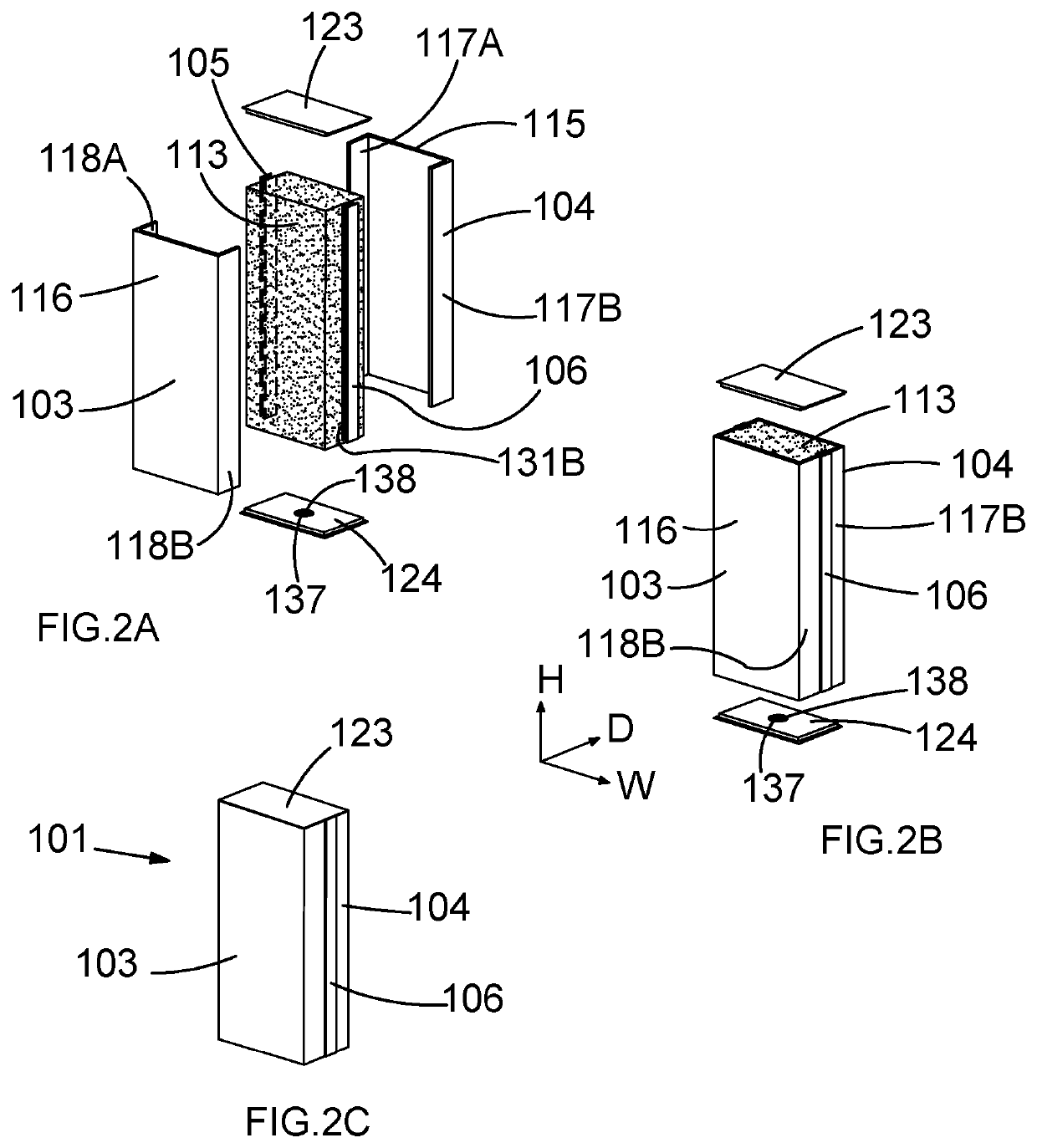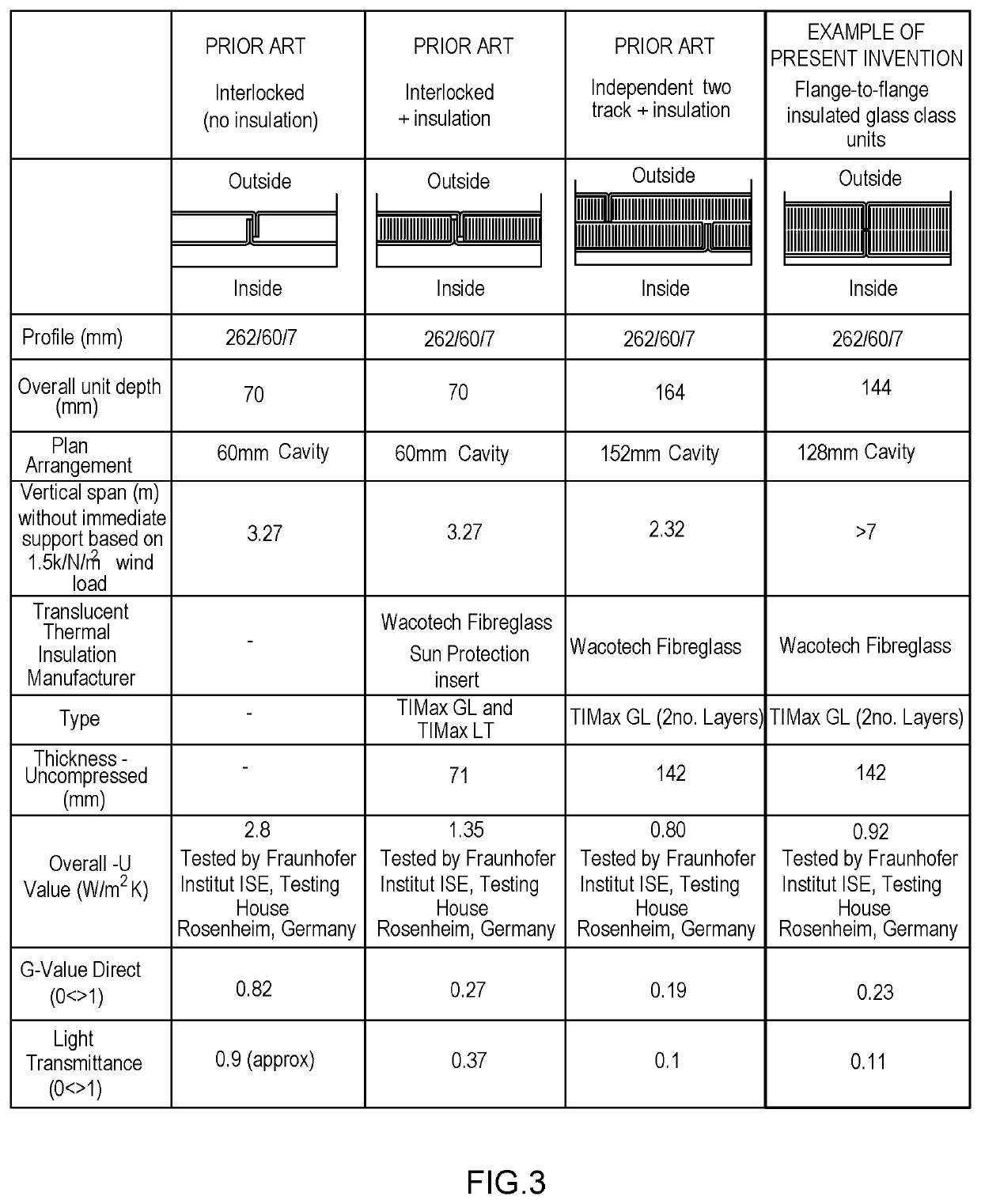Glazing Assembly
a technology of glazing and assembly, applied in the direction of building components, constructions, construction materials, etc., can solve the problems of reducing the longevity of the façade, increasing the cost, and reducing the efficiency of the façade, so as to reduce the cost, reduce the cost, and improve the longevity
- Summary
- Abstract
- Description
- Claims
- Application Information
AI Technical Summary
Benefits of technology
Problems solved by technology
Method used
Image
Examples
Embodiment Construction
[0097]Referring to FIGS. 1 to 3, an example glazing assembly according to the invention is now described. Glazing assembly 101 comprises first and second glass U-channels 103, 104. The first U-channel member 103 comprises a planar sheet 115 with first and second perpendicular flanges 117A, 117B which project orthogonally from either side of the sheet 115 and terminate at first and second flange edges 119A, 119B, respectively. Each U-channel is made from low iron cast glass which is enamelled on the inner inside face. In the present example the project-specific width of each U-channel is 404 mm, as measured between opposite outer faces 125, 126 of first and second flanges 117A and 117B. The thickness of the glass, as measured between outer 127 and inner 128 it faces of sheet 115 is 8 mm. The glass is toughened, heat-soak tested cast glass, with enamelled frit on the inner inside face.
[0098]The tensile strength values for the toughened cast glass of the member 103 are 50 Nmm−2 for the...
PUM
 Login to View More
Login to View More Abstract
Description
Claims
Application Information
 Login to View More
Login to View More - R&D
- Intellectual Property
- Life Sciences
- Materials
- Tech Scout
- Unparalleled Data Quality
- Higher Quality Content
- 60% Fewer Hallucinations
Browse by: Latest US Patents, China's latest patents, Technical Efficacy Thesaurus, Application Domain, Technology Topic, Popular Technical Reports.
© 2025 PatSnap. All rights reserved.Legal|Privacy policy|Modern Slavery Act Transparency Statement|Sitemap|About US| Contact US: help@patsnap.com



